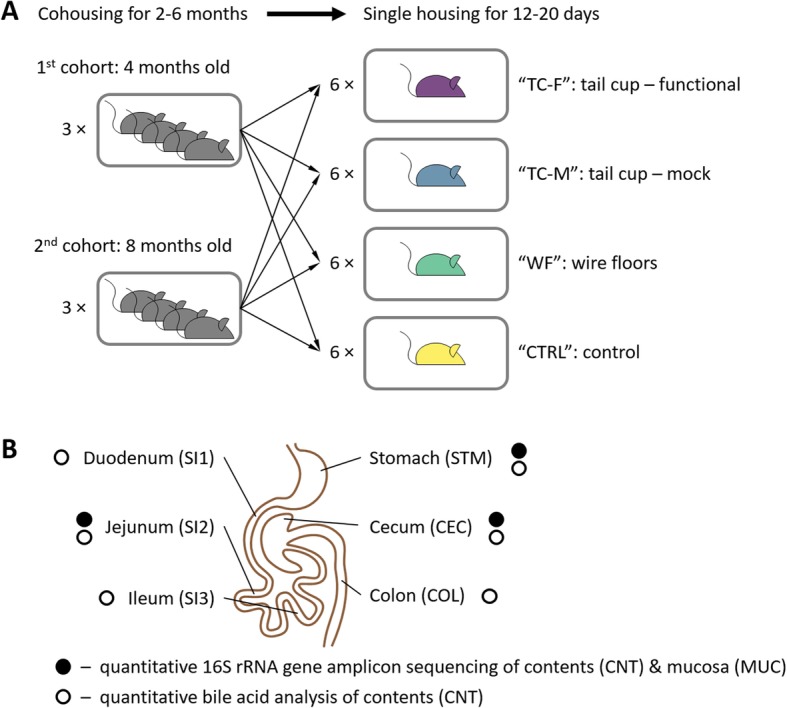Fig. 1.

An overview of the study design and timeline. a Mice from two age cohorts (4-month-old and 8-month-old) were raised co-housed (four mice to a cage) for 2–6 months. One mouse from each cage was then assigned to one of the four experimental conditions: functional tail cups (TC-F), mock tail cups (TC-M), housing on wire floors (WF), and controls housed in standard conditions (CTRL). All mice were singly housed and maintained on each treatment for 12–20 days (N = 24, 6 mice per group). b Samples were taken from six sites throughout the gastrointestinal tract. Each sample was analyzed by quantitative 16S rRNA gene amplicon sequencing of lumenal contents (CNT) and mucosa (MUC) and/or quantitative bile-acid analyses of CNT. Panel b is adapted from [13, 34])
